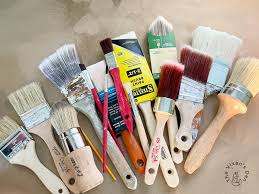The difference between an amateur-looking paint job and professional-quality results often comes down to the tools used, particularly the brushes. Learning to shop premium paint brushes represents perhaps the single most critical investment decision for both professional painters and serious DIY enthusiasts who understand that application quality dramatically affects both aesthetic outcomes and coating longevity. While budget brushes might seem economically attractive initially, their performance limitations often necessitate additional coats, create visible brush marks, and shed bristles that become permanently embedded in finished surfaces. Understanding the technical attributes that separate exceptional brushes from mediocre alternatives empowers more informed purchasing decisions that ultimately save both time and money.
Bristle Material Science
The foundation of brush performance begins with fiber selection—a complex material science decision with significant application implications:
Natural bristles, particularly those derived from Chinese hog bristles, possess microscopic splits (called “flags”) that naturally occur at the ends. These structures hold significantly more paint than synthetic alternatives, releasing it gradually during application for superior flow-out characteristics and reduced brush marking. Premium natural bristles undergo specialized cleaning processes that remove natural oils while preserving these flagged ends, creating optimal paint retention without contamination issues.
Advanced synthetic filaments have evolved dramatically beyond early nylon versions. Modern polyester/nylon blends incorporate tapered tips manufactured to simulate natural flagging while offering superior resilience when exposed to water-based formulations that can damage natural bristles. The highest-grade synthetics undergo post-manufacturing processes that create microscopic surface textures optimized for specific coating types—acrylics require different surface profiles than urethanes or epoxies.
Specialty formulations like Chinex, a DuPont-engineered synthetic, represent the cutting edge of bristle technology. These filaments combine exceptional paint holding capacity with cleaning characteristics that prevent paint buildup at the ferrule—a common failure point even in otherwise premium brushes. This specific material excels with modern low-VOC formulations that challenge traditional bristle technologies due to their modified surface tension characteristics.
Ferrule Construction Quality
The metal collar (ferrule) connecting bristles to handle represents a critical engineering component that directly impacts performance and longevity:
Premium brushes utilize seamless ferrules manufactured from corrosion-resistant alloys rather than folded sheet metal common in economy alternatives. This construction difference eliminates the separation vulnerability that frequently develops along seam lines after repeated cleaning cycles. The material thickness typically ranges from 0.3mm to 0.5mm in quality brushes, providing sufficient rigidity to maintain bristle orientation without adding unnecessary weight.
The internal bristle anchoring system within the ferrule dramatically affects performance stability over time. Superior brushes employ epoxy setting processes that encapsulate bristles in a waterproof matrix rather than simple mechanical crimping. This approach prevents the gradual bristle loss that compromises edge definition and accelerates brush retirement in lesser-quality options.
The ferrule-to-handle connection methodology provides telling quality indicators. Premium manufacturers utilize specialized adhesive systems supplemented by mechanical fastening—typically stainless steel pins—that maintain integrity despite exposure to solvents during cleaning processes. This redundant connection approach prevents the handle separation that commonly occurs in brushes relying solely on adhesives.
Handle Ergonomics and Materials
Handle design significantly impacts application control and user fatigue during extended painting sessions:
Material selection balances competing priorities including weight, durability, and comfort. Premium hardwoods like beech offer natural vibration dampening properties that reduce fatigue during stippling techniques, while engineered composites provide superior durability when exposed to cleaning solvents and rough handling common in professional environments.
Balance point engineering represents a frequently overlooked quality factor. Exceptional brushes position the center of gravity close to the ferrule rather than mid-handle, reducing the effort required to maintain precise control during detail work. This seemingly minor characteristic becomes increasingly significant during ceiling application or other positions requiring extended reach.
Grip geometry demonstrates meaningful ergonomic consideration in premium offerings. Cross-sectional shape shifts from circular near the ferrule to oval or flattened profiles at the grip area, preventing rotation during application while accommodating the natural hand position. This subtle design element significantly improves edge work precision and reduces the muscular tension that contributes to hand fatigue.
Bristle Setting Patterns
The arrangement and density of bristles within the ferrule directly influences application characteristics:
Premium angular brushes utilize progressive length setting patterns that create natural chisel effects rather than simply trimming standard brushes at angles. This manufacturing approach maintains consistent bristle density throughout the cutting edge, eliminating the performance irregularities common in economy angled brushes.
Filament density—measured in fibers per cubic centimeter—varies dramatically between quality levels. Professional-grade brushes typically contain 25-35% more bristles than consumer alternatives, creating improved paint capacity and more consistent release characteristics. This density difference becomes particularly apparent when cutting in edges, where higher bristle counts maintain line definition throughout the stroke length.











